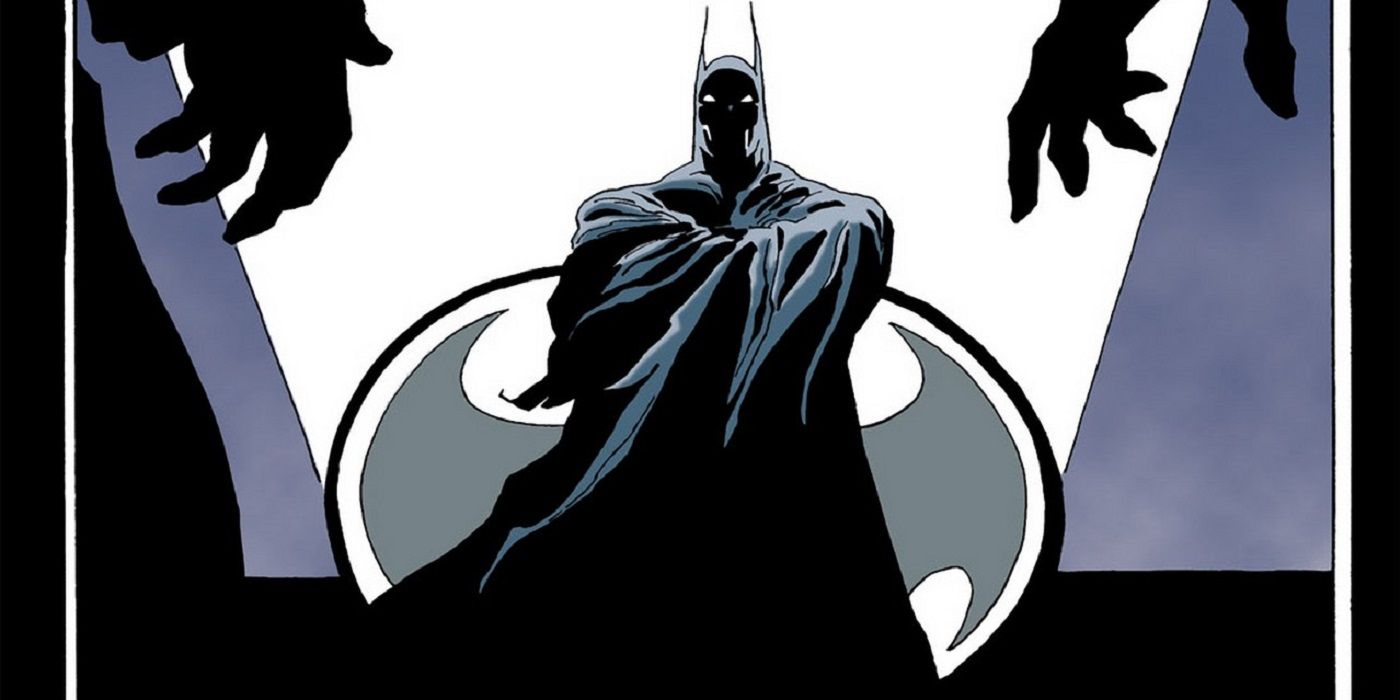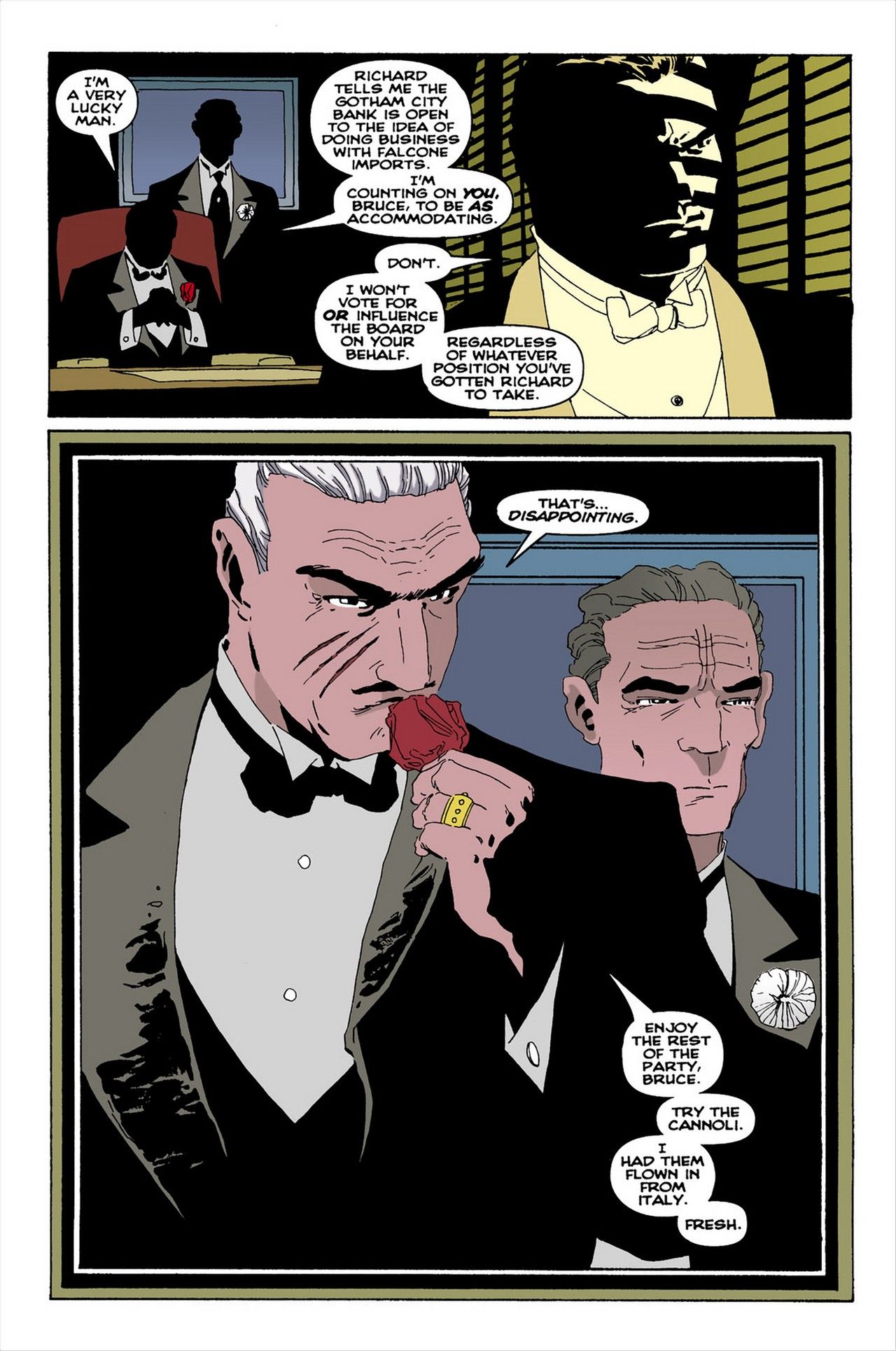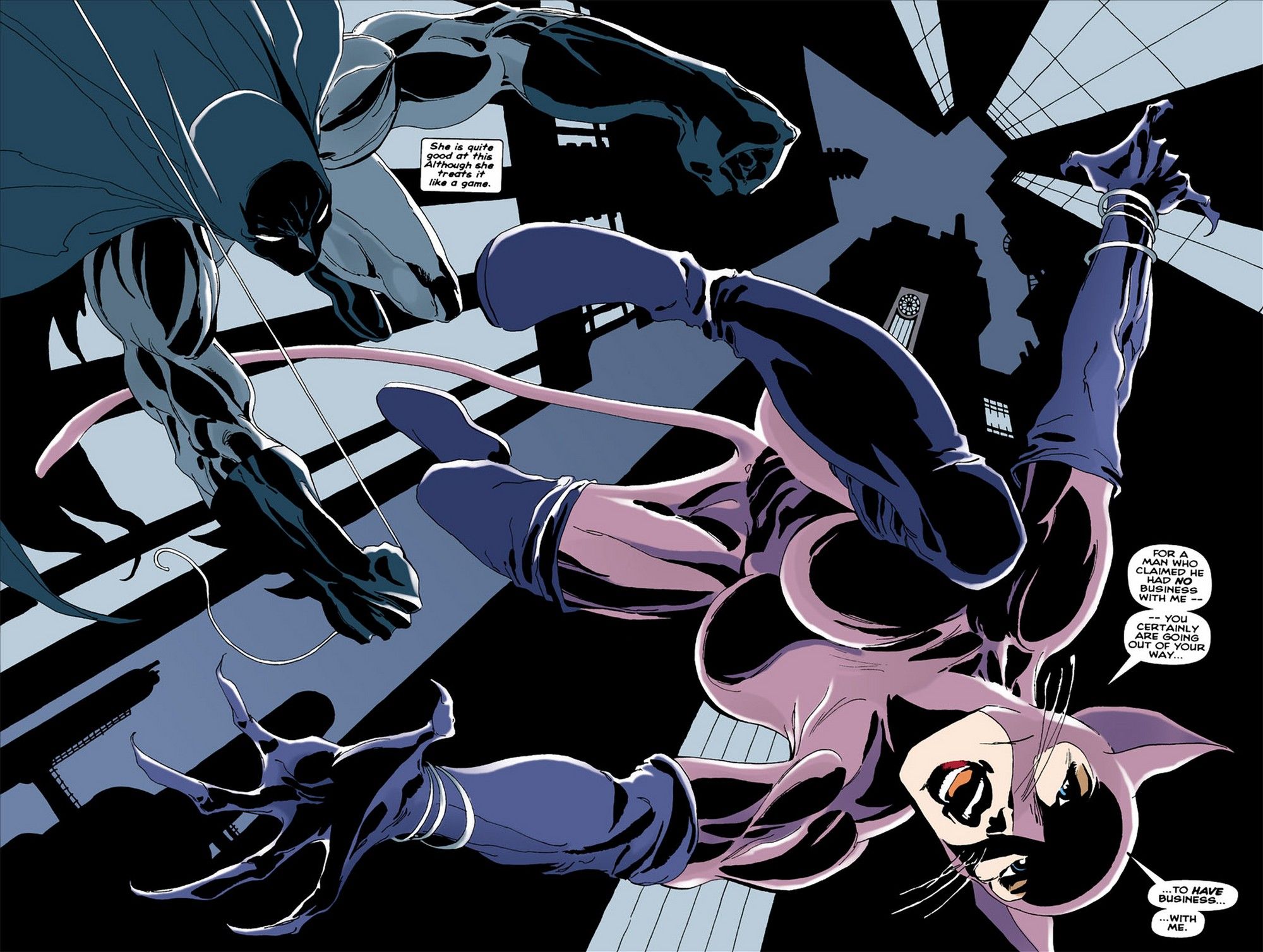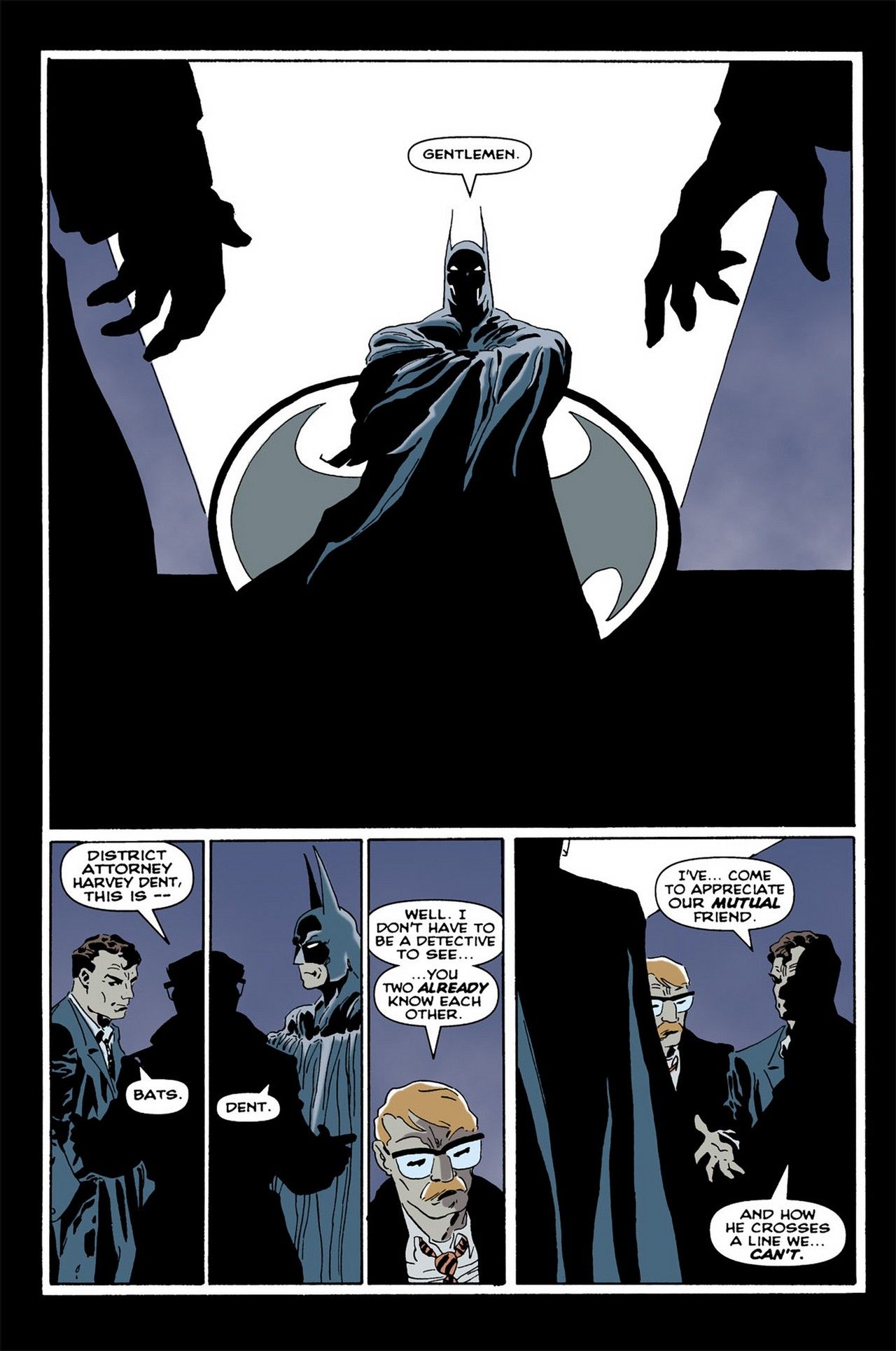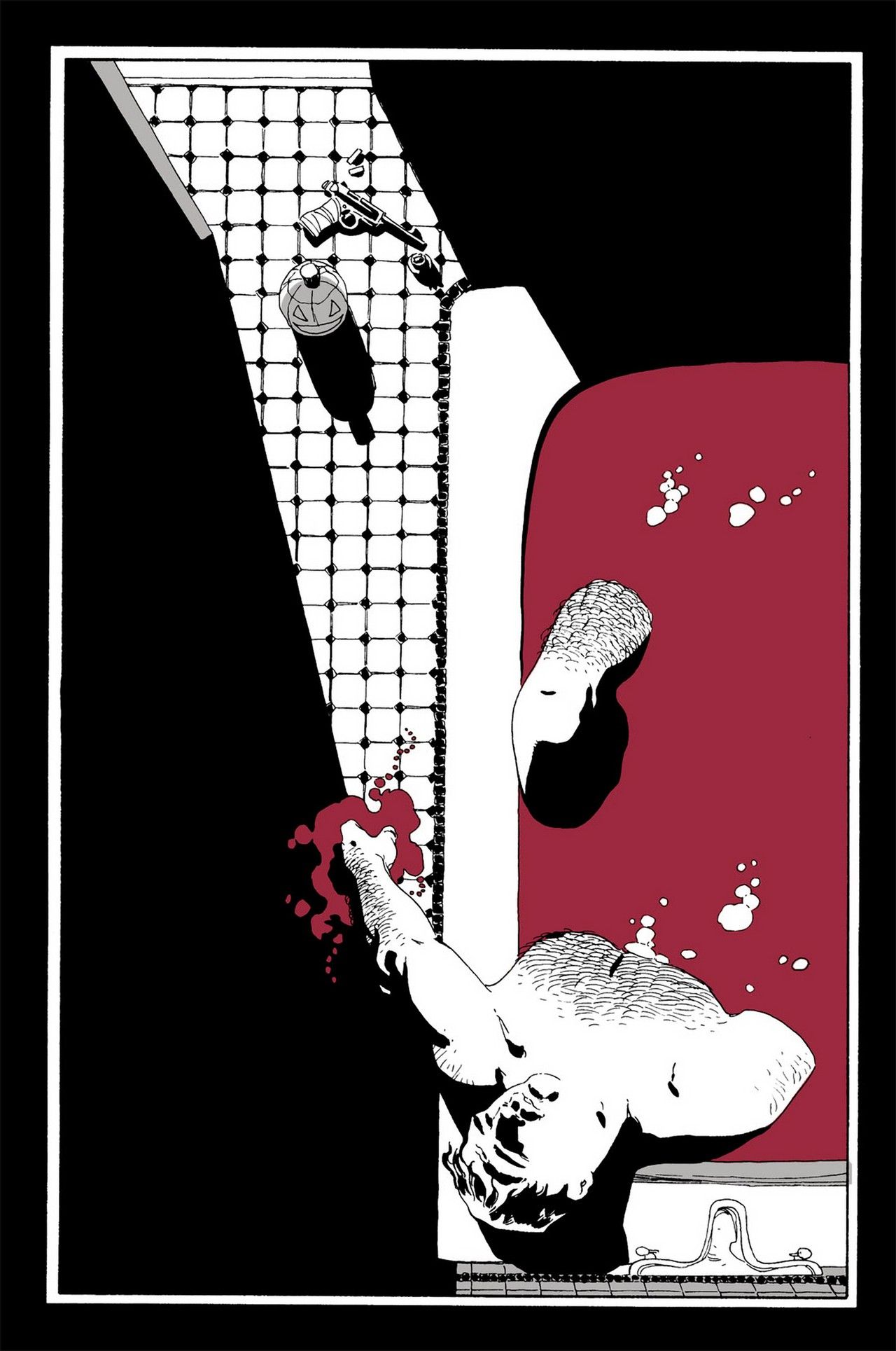Today, we look at the launch of Jeph Loeb and Tim Sale's classic Batman: The Long Halloween, 25 years ago this month.
This is "Look Back," where every four weeks of a month, I will spotlight a single issue of a comic book that came out in the past and talk about that issue (often in terms of a larger scale, like the series overall, etc.). Each spotlight will be a look at a comic book from a different year that came out the same month X amount of years ago. The first spotlight of the month looks at a book that came out this month ten years ago. The second spotlight looks at a book that came out this month 25 years ago. The third spotlight looks at a book that came out this month 50 years ago. The fourth spotlight looks at a book that came out this month 75 years ago. The occasional fifth week (we look at weeks broadly, so if a month has either five Sundays or five Saturdays, it counts as having a fifth week) looks at books from 20/30/40/60/70/80 years ago.
Today, we head to October 1996 for the first issue of Batman: The Long Halloween by Jeph Loeb, Tim Sale, Gregory Wright and Richard Starkings.
It gets lost sometimes in just HOW big of a deal that Batman: The Long Halloween was, but this was actually the FOURTH Batman Halloween project that Loeb and Sale had worked on for DC. As you may or may not know, before Loeb started writing comic books on TOP of all of his TV work, Loeb was a successful screenwriter, writing the hit films Teen Wolf and Commando. An old friend of Loeb's from Loeb's childhood, DC Editor Elliot S! Maggin (who had actually used an idea the young Loeb had given him for a story very early in Maggin's career, when Maggin was still a college student and met Loeb through Loeb's step-father, who was a vice-president at Brandeis University) was Loeb's first editor at DC (after DC publisher Jenette Kahn had asked Loeb if he was interested in writing comics for DC after a Flash movie Loeb was writing fell apart). That first assignment was a Challengers of the Unknown maxiseries in 1991 drawn by an artist named Tim Sale. So the Loeb/Sale partnership is now THIRTY YEARS OLD.
Loeb and Sale then did a Batman: Legends of the Dark Knight Halloween Special in 1993. It was so successful that they did two more in 1994 and 1995 before deciding to launch a gigantic final Halloween story for Halloween 1996 called, appropriately enough, The Long Halloween.
The comic is a fascinating love letter to both Frank Miller and David Mazzucchelli's "Batman: Year One" as well as noir films, period. The issue opens with a riff on the classic opening of Francis Ford Coppola's The Godfather, only with mob boss Carmine Falcone in the place of Vito Corleone, sporting the scars that he received from Catwoman in that Year One story...
While "Year One" is clearly the most notable inspiration for The Long Halloween, I particularly appreciated how much Loeb and Sale were willing to experiment with other influences, like the use of a modern Catwoman design that was not at all like how Catwoman was in "Year One," but much better. Sale's dynamic artwork practically soars off of the page as Batman and Catwoman have a wild chase through the sky as Catwoman and Batman both showed up at Falcone's place to rob his safe (Batman for information that could take Falcone down and Catwoman for some jewelry).
Loeb and Sale's Catwoman is so much more vibrant of a character than the Catwoman of "Year One," as they took in other influences beyond Miller's rather narrow depiction of Selina Kyle. Loeb and Sale brought more of the Golden Age Catwoman electricity to the series.
One of the great things that Loeb did throughout this first issue is really work the power of repetition. The issue opens with Bruce Wayne talking about how he believes in Gotham City. He also notes that he believes in Harvey Dent and that he believes in Jim Gordon and the pairing between those three men is really powerful, as they all honestly believe that they're about to crack something big here, working together, not knowing that Gotham City was about to get much weirder....
And of course, we can't talk Long Halloween without talking about the introduction of the hoilday-themed serial killer known as Holiday, the central mystery of this series. His first victim is the nephew of Carmine Falcone we see get married at the start of the issue...
Boy, Gregory Wright's colors really just made everything POP, right? This is truly one of the most gorgeous Batman comic book of all-time and Loeb's story luckily gives the whole thing more meat than just "Wow, look at that amazing artwork" (not that that wouldn't have been enough on its own). The pair recently returned for a 25th anniversary reunion.
If you folks have any suggestions for November (or any other later months) 2011, 1996, 1971 and 1946 comic books for me to spotlight, drop me a line at brianc@cbr.com! Here is the guide, though, for the cover dates of books so that you can make suggestions for books that actually came out in the correct month. Generally speaking, the traditional amount of time between the cover date and the release date of a comic book throughout most of comic history has been two months (it was three months at times, but not during the times we're discussing here). So the comic books will have a cover date that is two months ahead of the actual release date (so October for a book that came out in August). Obviously, it is easier to tell when a book from 10 years ago was released, since there was internet coverage of books back then.

